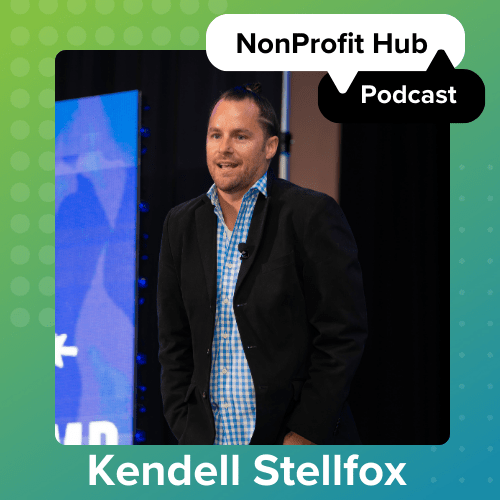Laying a Foundation for Highly-Connected Nonprofit Teams
For many nonprofits, 2022 is shaping up to be a turning point in how they conduct internal operations. Many teams that previously worked remotely are now returning to the office. Others are content to continue operating remotely. In addition, some are experimenting with hybrid approaches.
Each method has unique pros and cons, and teams must adapt. Specifically, many nonprofits will need to consider how their choice to return to the office or work remotely will impact their staff’s ability to stay connected.
Highly-connected teams with strong communication practices tend to be more dynamic, responsive, and effective than those with significant delays in their responsiveness. This allows them to quickly respond to challenges, seize opportunities, and clear up confusion.
Four communication best practices
This article will explore these four communication best practices how to improve remote work, and how nonprofits to stay connect at home or in the office, such as:
- Create internal communication guidelines.
- Invest in tools to streamline workflows.
- Implement effective work-from-home protocols.
- Routinely collect staff feedback.
These tips rely on a combination of effective nonprofit software and communication strategies. Assess your nonprofit’s current communication tools to consider how they can help build a reliable framework to support your communication practices. Let’s get started.
1. Create internal communication guidelines.
Whether employees work remotely or in the office, any organization can suffer from communication slowdowns and miscommunication. While it might seem like a small change to how your team interacts with one another, structured communication can improve your employees’ productivity, and engagement as teams will know who to reach out to and when.
Tips
- Create a priority system. Knowing where to start when organizing emails each morning can be challenging. It’s pretty common for high-priority messages sent early in the day to get buried under emails that don’t require immediate attention. Create a priority system by having employees mark messages to indicate how quickly action is needed. This can be done by adding abbreviations at the beginning of each email subject line. For example, “HP” for high priority or adding color-coded markers to messages in your CRM.
- Select communication channels. If your team uses email, your CRM, Slack, and text to communicate, it’s easy for messages to get lost between channels. Streamline your communication process by using only a few channels. Consider designating certain channels for specific types of messages. For example, your staff might communicate primarily via email but have a group text for emergencies.
- Create templates for routine messages. There are many messages you likely send over and over again, such as when you approve volunteers, schedule board meetings, or answer constituent questions. Instead of writing unique emails every time, create a series of templates that staff members use. This also ensures that your emails will always be professional and consistent across your organization.
Additionally, if your nonprofit has ongoing projects that require face-to-face communication, like creating long-term marketing strategies, consider how you can create a streamlined process. Set up these meetings rather than communicating back and forth through email.
2. Invest in tools to streamline workflows.
Modern nonprofit software has significantly advanced in the past few years. Therefore, nonprofit teams now have access to various tools to help them stay in touch while speeding up their work processes. Assess your current software solutions to determine whether they meet your communication needs. Identify whether any new tools would improve your communication practices.
For example, to streamline your workflow and communication, your team might benefit from investing in:
- A nonprofit CRM. Your CRM is at the center of your nonprofit’s software solutions, housing key information about your donors, volunteers, grants, fundraisers, and more. When improving your workflow, you can start with investing in a CRM with streamlined automation features. Also, you can train your employees to understand better how to leverage your CRM. EveryAction’s guide to nonprofit CRMs recommends looking for a solution with the following automation features: built-in templates, custom automation workflow builder, branched workflows, automation for email and mobile messaging, CRM automation, and real-time analysis.
- Board management tools. Your board determines the direction of your nonprofit, and board-specific meeting and management tools can help your board members devote most of their time to important discussions regarding your strategy rather than working out meeting logistics. These tools often include features like a scheduling system, easy file sharing during meetings, and a note-taking system.
- Grant management tools. Applying for a single grant can take months and often requires feedback and collective action from several team members. Help them stay organized by investing in a CRM with grant management tools. You can also separate a grant management system that allows you to keep your grant documents organized and stick to your application timeline.
Things to Consider
When investing in any new software solution, take security precautions to protect your donors, constituents, and organization’s sensitive information. When onboarding your staff members to your new project management software, consider who you will give different permission levels. Think about how you can encourage members to make smart security decisions to avoid potential leaks.
3. Implement effective work-from-home protocols.
Being in close proximity to other team members allows you to check on projects’ progress quickly. You get questions answered as they arise, and stay on top of all ongoing activities. Physical distance can slow down communication, even with modern technology.
However, this doesn’t mean your nonprofit should abandon the idea of allowing team members to work from home. Instead, organizations with a remote operations structure must establish protocols for improving productivity and communication.
Re:Charity’s guide to nonprofit work-from-home tools walks through a few popular strategies for staying connected and focused while working remotely:
- Use video conferencing tools. Hoping from remote call to call can lead to burnout and result in meetings where participants have trouble focusing. Use video conferencing tools and require everyone to have their camera on to replicate the professional environment of an in-person meeting and help staff members stay engaged.
- Create a time logging system. When you cannot physically see your staff working, it’s easy to fear that projects are not getting done as efficiently as if team members were in the office. You can assuage these fears by creating a time logging system, wherein employees track how much time they spend on each project.
- Create dedicated workspaces. Working from home can lead to a lack of separation between work and home life. That can create unnecessary stressors. To help your team members re-assert this important division and improve remote work, encourage them to set up a designated workspace in their homes that acts as their office from the beginning to the end of the work day.
Other Ideas
If your nonprofit implements a hybrid workplace, consider how you can use your in-office days to make the most of your staff’s time together. For example, you might schedule meeting times based on when the whole or a majority of your team is in the office. You can also save work that can be completed individually for work-from-home days. This will help improve remote work and streamline the workflow process.
4. Routinely collect staff feedback.
Every nonprofit is different and will have its own set of unique communication needs. While external advice and research can provide an outside perspective, seeking internal feedback and staying attuned to your staff’s specific communication challenges can help solve regular miscommunication. It can address productivity slowdowns and other issues that disrupt a team’s communication ability.
Of course, the same obstacles interfering with your communication practices can also make it difficult to gather feedback. Try creating a structured system for collecting feedback to keep communication between you and your staff as open as possible, even during ongoing external and internal disruptions.
How to Collect Feedback
Here are a few ways you can request feedback from your staff to improve remote work and stay connected:
- Send out surveys. Online surveys are one of the most straightforward ways to collect feedback. These surveys can ask questions about an individual employee’s strengths, how your business can improve, and if there are any new ideas for improving internal management.
- Schedule one-on-one meetings. Some staff members may feel more comfortable explaining their communication issues in a one-on-one meeting. Be sure to emphasize that these meetings are ultimately low stakes. Showcase that staff members are encouraged to report problems they are encountering related to communication and workflow.
- Ensure employees know who their supervisors are. Situations can and will arise between your feedback collection periods. Your staff should know who they can go to if an immediate issue arises. If you have a change in leadership at any point, let your team know who they should report to until changes have settled to ensure no reports go misplaced in the shuffle.
Final Thoughts
While you should focus first on your permanent staff, your volunteers and temporary team members can also provide unique insights into your communication processes. At the end of a volunteer’s time with your nonprofit, send out a survey using your volunteer management system. You can also have your volunteer manager meet with them to learn how you could improve the volunteer experience and operations at your nonprofit as a whole.
Keeping your team connected even while physically distant is fundamental to your nonprofit’s ability to continue forwarding your mission. Leverage your software’s communication tools to improve productivity. Stay in touch with your team while implementing communication best practices for remote and in-office team members. Hope this blog helped give you ideas to improve remote work (or hybrid setting) to connect your team.





.gif)



